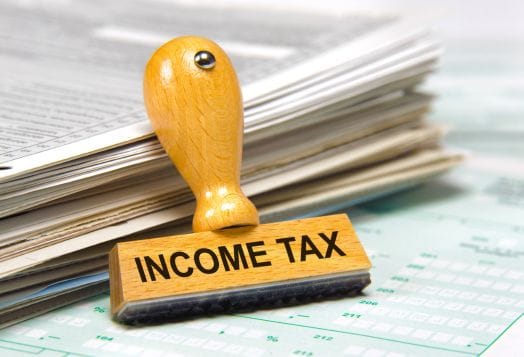
The last day to file your Income Tax Return (ITR) is closing in, and you’re staring at your laptop, unsure where to begin. Sounds familiar? You’re not alone. Tax season can feel overwhelming, whether you’re an employee, freelancer, or business owner. If you’ve been searching for how to file income tax online in India, this step-by-step guide makes it simple.
What is an Income Tax Return (ITR)?
An Income Tax Return (ITR) is a document submitted to the Income Tax Department, detailing your earnings and tax obligations for the year. Based on your income sources, tax category, and financial activity, you must choose the right form among the seven available options: ITR 1 to ITR 7. Filing income tax on time keeps you compliant and helps you claim deductions and refunds.
Who needs to file an income tax return?
Income tax return filing for salaried employees isn’t complicated when you know the rules. Here’s a quick guide to figure out if you need to file. If you’re not sure whether or not you fall under the mandatory filing category, here's a quick breakdown:
Category | Who Needs to File? |
Salaried Individuals | If your gross income before deductions (80C–80U) exceeds the exemption limit. |
Business Owners & Firms | All firms, regardless of profit or loss, must file ITR. Includes LLPs, partnerships, and private limited companies. |
Directors & Partners | If you’re a Director in a Private Limited Company or a Partner in an LLP, filing is mandatory. |
Dividend Earners | If you earn dividends from stocks, mutual funds, FDs, bonds, or interest, an ITR is required. |
Charity & Religious Trusts | If you receive income from a charitable or religious trust, including voluntary donations. |
Tax Refund Seekers | If you're eligible for a tax refund, filing an ITR is the only way to claim it. |
NRIs & Tech Professionals | NRIs and tech professionals with Indian income may need to file, depending on earnings and tax liabilities. |
Please note: Even if your income is below the taxable limit, filing income tax ITR can be beneficial—it helps with loan approvals, visa applications, and claiming refunds.
When is Filing an ITR Mandatory in India?
Under Section 139 of the Income Tax Act, you must file an Income Tax Return (ITR) if your total income before deductions (Sections 80C–80U) crosses the basic exemption limit:
Age Group | Exemption Limit |
Below 60 years | ₹2.5 lakh |
60 to 80 years (Senior Citizens) | ₹3 lakh |
Above 80 years (Super Senior Citizens) | ₹5 lakh |
👉 Remember: This threshold applies before any tax-saving deductions. Miscalculating this could lead to non-compliance and penalties.
Other situations that require ITR filing
Even if your income is below the exemption limit, you must file an ITR if you meet any of these conditions:
Condition | Threshold |
High-Value Bank Deposits | Deposited ₹1 crore+ in one or more current accounts (excl. post office). |
Savings Bank Deposits | Deposited ₹50 lakh+ in savings accounts. |
Foreign Travel Expenses | Spent over ₹2 lakh on international travel. |
Electricity Expenses | Paid ₹1 lakh+ in annual electricity bills. |
TDS/TCS Deductions | If TDS or TCS exceeded ₹25,000 (₹50,000 for seniors). |
Business Turnover | Business sales, turnover, or receipts over ₹60 lakh. |
Professional Income | Earned ₹10 lakh+ as a professional (freelancers, consultants, etc.). |
How To File Income Tax: A Step-by-Step Guide

Looking for the best way to file ITR without mistakes? Follow these steps to avoid common errors and file accurately.
Step 1: Gather your documents
Before you start, keep these documents handy:
✅ PAN Card – Essential for identification.
✅ Aadhaar Card – Mandatory for e-filing verification.
✅ Form 16 – Issued by your employer (for salaried individuals).
✅ Form 26AS – Your tax credit statement.
✅ Bank Statements – To track income and investments.
✅ Investment Proofs – For claiming deductions (PPF, ELSS, LIC, etc.).
✅ Loan & Interest Certificates – Home loan, education loan, etc.
✅ Capital Gains Statements – If you’ve sold stocks, mutual funds, or property.
Step 2: Choose the right ITR form
The Income Tax Department has 7 different ITR forms. Choose the correct one based on your income source:
ITR Form | Who Should File? |
ITR-1 (Sahaj) | Salaried individuals, pensioners, and single-property owners. |
ITR-2 | Individuals/HUFs with capital gains, multiple properties, or foreign assets. |
ITR-3 | Business owners and professionals (freelancers, consultants). |
ITR-4 (Sugam) | Presumptive tax scheme filers (businesses/professionals with turnover up to ₹2 crore). |
ITR-5 | Partnerships, LLPs, and AOPs (Association of Persons). |
ITR-6 | Companies (except those claiming exemption under Section 11). |
ITR-7 | Trusts, NGOs, and charitable institutions. |
Step 3: Log in to the income tax portal
1️⃣ Go to the Income Tax e-Filing Portal
2️⃣ Log in using your PAN and password.
3️⃣ Select ‘File Income Tax Return’ and choose the Assessment Year (AY).
Step 4: Enter income & tax details
Select your ITR form as per your income category.
Pre-filled details (salary, TDS, etc.) will be available—verify them.
Manually enter other income sources (freelancing, rent, capital gains, etc.).
- Claim Section 80C deductions to lower taxable income.
Check if you owe taxes or are eligible for a refund.
Step 5: Verify tax calculation & pay any due taxes
The system will automatically calculate your tax liability.
If additional tax is payable, pay via Net Banking, UPI, or Debit Card (Challan ITNS 280).
Download the payment receipt for records.
Step 6: Submit & Verify Your ITR
Click ‘Submit’ to file your ITR.
Verify your return through:
Aadhaar OTP
Net Banking
EVC via Bank Account or Demat
Once verified, you’re done!
Step 7: Check ITR processing & refund status
Post-filing, track your ITR processing on the Income Tax portal.
If eligible for a refund, you can expect it in 7-30 days via direct bank transfer.
Common ITR Filing Mistakes—and How to Fix Them
Even a small mistake in your ITR can cause delays or trigger a notice. Here are some common errors and how to avoid them:
Incorrect Personal Details (PAN, Aadhaar, or Bank Info)
Why it matters: Refunds get delayed if bank details are wrong.
Fix: Double-check details with official documents before submission.
Mismatch Between Form 16 and Form 26AS
Why it matters: If income in Form 16 doesn’t match Form 26AS, you might get a tax notice.
Fix: Download and verify Form 26AS from the Income Tax portal before filing.
Forgetting to Verify the ITR
Why it matters: Filing isn’t complete until verified.
Fix: Use Aadhaar OTP or net banking to verify immediately after filing.
Claiming Incorrect Deductions
Why it matters: Overclaimed deductions can trigger scrutiny.
Fix: Only claim deductions supported by valid documentation.
Errors in Capital Gains Reporting
Why it matters: Capital gains tax is closely monitored.
Fix: Report gains accurately using statements from brokers and Form 26AS.
Let the Professionals Handle Your Tax Worries!
Filing an Income Tax Return (ITR) might feel overwhelming, but you don’t have to do it alone. From choosing the right form to ensuring compliance with tax laws, every step matters. A single mistake could mean delays, penalties, or missing out on refunds.
That’s where our professionals come in! Instead of stressing over calculations and deadlines, let our tax experts handle it for you. With round-the-clock support and seamless online filing, your ITR gets done quickly, accurately, and hassle-free.
Disclaimer: This information provided is intended for general informational purposes only. It is not a substitute for professional advice or guidance. For personalized recommendations or specific concerns, please consult a certified professional.




